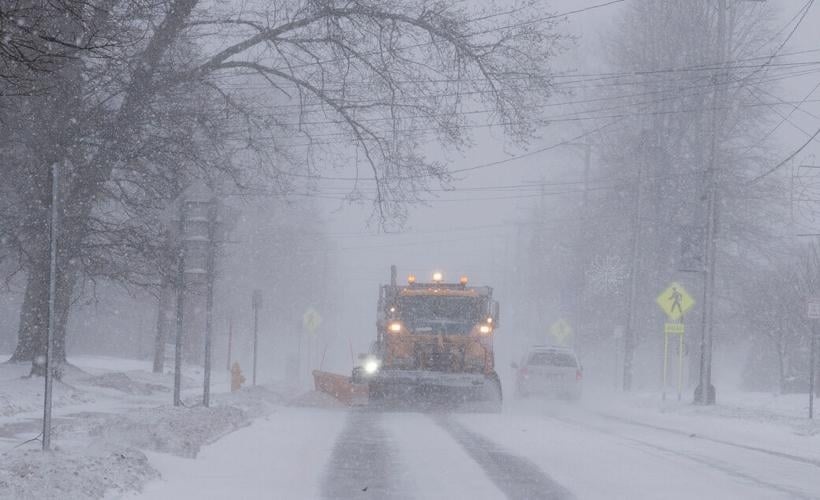
This comprehensive guide, “Winter Storm Safety: Protecting Against Hidden Hazards,” delves into crucial precautions amidst severe winter weather, focusing on carbon monoxide dangers and related risks. Addressing the U.S. Consumer Product Safety Commission’s recommendations, it emphasizes proper generator usage, alarm functionality, and careful handling of appliances after storms. The heightened risk for marginalized communities is underlined. Readers will gain insights into safeguarding against carbon monoxide poisoning, fires, and electric shock. This thorough resource aims to empower individuals and families, fostering resilience and promoting community safety during and after winter storms.
As winter storms threaten the nation, the urgency to address hidden dangers amplifies. Beyond the immediate concerns of blizzards and power outages, the silent threat of carbon monoxide (CO) looms large. This guide, endorsed by the U.S. Consumer Product Safety Commission, serves as a comprehensive resource to navigate the complexities of winter storm safety. With a focus on CO poisoning and related hazards, it unveils essential precautions, shedding light on the disproportionate risks faced by certain communities. By delving into proper generator use, alarm maintenance, and post-storm appliance handling, this introduction sets the stage for an informed approach to safeguarding lives.
To mitigate these risks, it is crucial never to operate a portable generator indoors, including in homes, garages, basements, crawl spaces, or sheds. Simply opening doors or windows is insufficient, as lethal levels of CO can accumulate. Generators should only be used outdoors, positioned at least 20 feet away from the house, with the exhaust directed away from any potential entry points like windows or openings in other buildings.
Porches and carports are also unsuitable locations for generators due to their proximity to the house. Adhering to the generator’s instructions about electrical shock hazards is vital. This may involve using an NFPA-rated non-combustible generator tent or waiting until rain has ceased. Regular maintenance of portable generators is essential, with users advised to read and follow all labels, instructions, and warnings provided in the generator and owner’s manual.
Opting for a portable generator with a CO shut-off safety feature is a wise choice. These generators are designed to automatically shut off when high levels of CO are detected. Models certified to the latest safety standards, such as PGMA G300-2018 and UL 2201, are estimated to reduce CO poisoning deaths by 87% and 100%, respectively. UL 2201-certified models not only include a CO shut-off feature but also exhibit reduced CO emissions.
Ensuring the functionality of smoke and CO alarms is equally important. Battery-operated CO alarms or those with battery backups should be installed on each level and outside separate sleeping areas in a home. The CPSC recommends interconnected alarms for optimal effectiveness. Additionally, smoke alarms should be placed on every level and in each bedroom. Regular testing and battery replacement are crucial, and any sounding alarm should be treated seriously, prompting an immediate evacuation and a call to 911.
The CPSC extends its safety advice to other aspects of storm preparedness, such as the use of charcoal and candles. It strongly advises against using charcoal indoors, as it can lead to the buildup of lethal CO levels. Cooking on charcoal in a garage, even with the door open, is also discouraged. In terms of lighting, flashlights or battery-operated candles are preferable over open-flame alternatives. If traditional candles are used, they should be positioned away from flammable materials and never left unattended or burning while occupants are sleeping.
Another critical aspect of storm safety involves exercising caution with appliances that may have been exposed to water. Wet appliances still plugged into electrical sources should not be touched, and a professional or the gas/electric company should evaluate their safety. Replacement of gas control valves, electrical wiring, circuit breakers, and fuses that have been submerged is essential to prevent potential hazards.
If there is any suspicion of gas leakage, individuals are advised to leave their homes immediately and contact local gas authorities from a safe distance. Operating electronics, including lights and phones, should be avoided until safely outside the home. These comprehensive safety measures are crucial for minimizing risks and ensuring the well-being of individuals and families during and after winter storms. By staying informed and taking proactive steps, everyone can contribute to a safer and more resilient community in the face of challenging weather conditions.
As winter storms continue to pose threats, proactive measures become paramount to mitigate hidden dangers. This guide, emphasizing the U.S. Consumer Product Safety Commission’s guidelines, provides a blueprint for safeguarding against carbon monoxide poisoning, fires, and electric shock during and after storms. The elevated risk faced by specific communities underscores the need for targeted awareness and action. By adhering to recommended practices such as proper generator usage, alarm functionality checks, and cautious handling of appliances, individuals and families can fortify their defenses against potential hazards. This conclusion reinforces the importance of collective responsibility, urging communities to prioritize safety and resilience in the face of challenging winter conditions.
